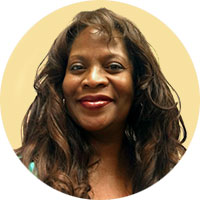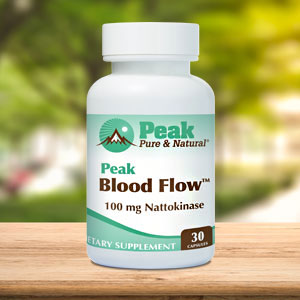Get Easy Health Digest™ in your inbox and don’t miss a thing when you subscribe today. Plus, get the free bonus report, Mother Nature’s Tips, Tricks and Remedies for Cholesterol, Blood Pressure & Blood Sugar as my way of saying welcome to the community!
What anyone under 45 should know about stroke

Many people think having a stroke is simply for older people, but that’s not true.
Stroke can occur unexpectedly and at any age. In fact, stroke is on the rise among younger adults, and knowing the signs of a stroke can be lifesaving.
But, unfortunately, many that fall within this growing at-risk group are not familiar with common stroke symptoms.
Researchers recently surveyed 9,844 younger adults under the age of 45 on signs of a stroke. The results were concerning…
Nearly 30 percent were unable to name all five of the most common stroke symptoms, and 3 percent could not name even just one.
What I found especially concerning was that nearly 3 percent surveyed indicated they would not contact emergency medical services if they perceived someone experiencing stroke symptoms. Surely, only because they were not aware that when it comes to stroke, timing is a matter of life and death.
“The faster you are treated, the more likely you are to minimize the long-term effects of a stroke and even prevent death,” according to Mitchell S. V. Elkind, M.D., M.S., FAHA, FAAN, president of the American Heart Association.
So, it’s time for Stroke 101…
Why stroke risk is growing among younger people
Experts chime in and state the increase is due to the rise in obesity-related lifestyle risk factors among younger people, including hypertension, diabetes and high cholesterol.
According to the Centers for Disease Control and Prevention, in 2005-2006, 28 percent of young adults age 20-39 were obese. A decade later, that rate jumped to 35.7 percent of young adults in the same age range.
A stroke happens when there is a loss of blood flow to your brain. When your brain cells can’t get oxygen, they quickly start to die, causing brain damage, disability or even death. There are three main types of strokes:
- Ischemic strokes are the most common and are caused when a blood vessel supplying blood to the brain is obstructed, most often by a blood clot that develops at the fatty plaque within the vessel. Clots due to atrial fibrillation also lead to this kind of stroke.
- Hemorrhagic strokes result when a weak blood vessel ruptures causing bleeding inside the brain, most often caused by high blood pressure.
- Transient ischemic attack (a warning or “mini-stroke”) occurs due to a serious temporary blood clot.
Recognizing stroke
Increased public awareness of the warning signs of stroke may be necessary. The Heart and Stroke Foundation of Ontario Canada conducted an educational campaign using mass media to track awareness and determine the impact of different media strategies.
The results concluded communities exposed to television advertising increased significantly in the ability to name the warning signs of a stroke for both men and women under the age of 65.
The American Heart Association/American Stroke Association is on a mission to increase public recognition of common stroke symptoms. Due to their sharp memories, younger people have a good chance of remembering the acronym F.A.S.T to identify stroke signs and call emergency services 9-1-1.
- Face drooping
- Arm weakened
- Slurred speech
- Time to call 9-1-1
Stroke Prevention
Here are some of the significant risk factors for a stroke:
- High blood pressure
- Diabetes
- Heart disease
- Genetics or family history
- Age
- Race and ethnicity
- Unhealthy diet
- High cholesterol
- Alcohol and illicit drug use
- Limited physical activity
According to cardiologist and EHO contributor, Dr. Elizabeth Klodas, strokes are preventable. A study involving 27,000 people from every continent in the world, found that 90 percent of all strokes could be eliminated if lifestyle-related risk factors could be controlled.
Some heart-healthy lifestyle changes to start with include:
- Getting regular exercise
- Managing your blood pressure
- Stop smoking
- Managing stress
- Maintain a healthy weight
- Eat a healthy heart diet — Check out what to eat and what to supplement from Dr. Michael Cutler, to ward off stroke.
Editor’s note: What do you really know about stroke? The truth is, only 10% of stroke survivors recover almost completely, and all doctors can offer is what to do after a stroke occurs. That’s unacceptable considering 80% of strokes are preventable! Click here to discover how to escape The Stroke Syndrome: 5 Signs it’s Stalking You — Plus the Hidden Causes and Preventive Measures You’ve Never Heard About!
Sources:
Advertising Strategies to increase public knowledge of the warning signs of stroke — AHA
Nearly one in three young adults in the US does not know common stroke symptoms — Science Daily
Strokes among younger people on the rise — Texas Medical Center
Stroke Facts — Centers for Disease Control (CDC)
Stroke — MedlinePlus













